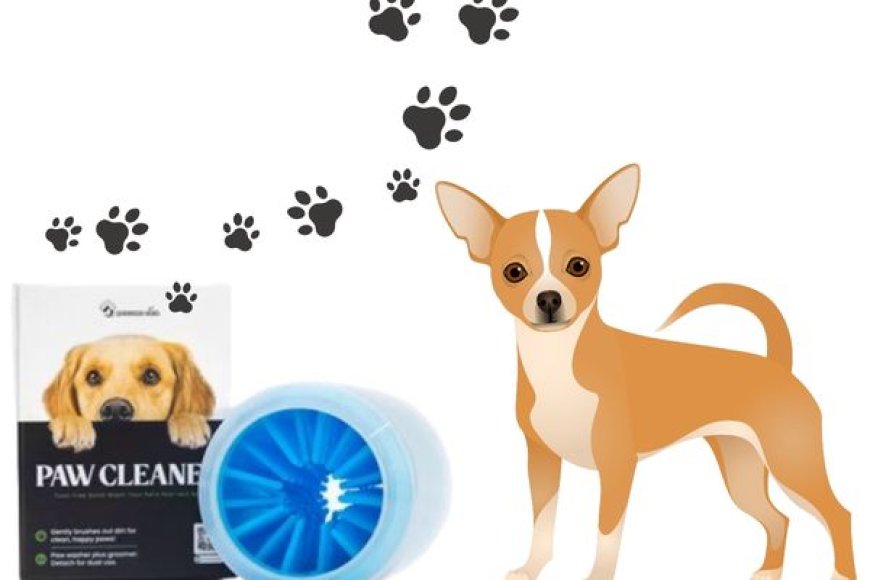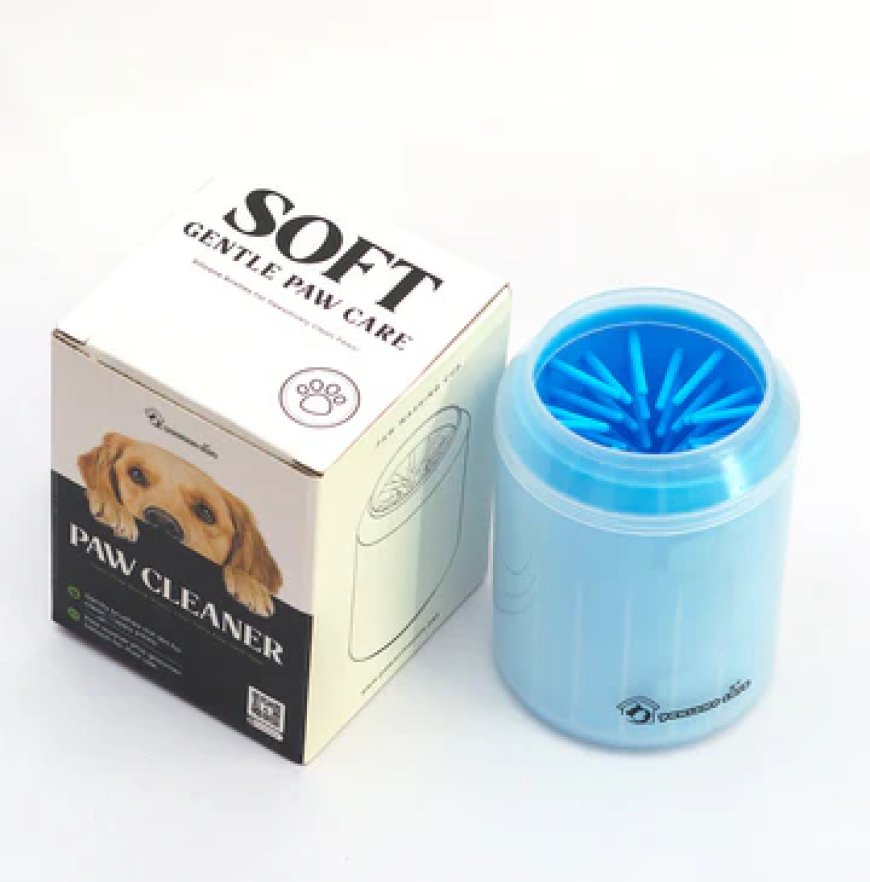The Ultimate Guide To Using A Paw Washer | Pawsome Pals
Learn how to effectively use a paw washer to keep your pet's paws clean and healthy. Follow Pawsome Pals' ultimate guide for the best results.
As pet parents, we know the struggle of keeping our homes clean while letting our furry friends roam freely outdoors. Mud, dirt, and grime—their paws bring in all sorts of outdoor souvenirs. Hence, a paw washer is an excellent choice for pet cleanliness and home hygiene. But how do you use one effectively? This blog will guide you through the ins and outs of using a paw washer, ensuring your pet's paws are spotless. Read on:
What Are Paw Washers?
Paw washers come in various designs, but their purpose remains the same, and that is to clean your pet's paws thoroughly and gently. Whether it's a manual cup with soft bristles or an automatic device, choosing the right paw washer is crucial for your pet's comfort and cleaning effectiveness.
Types Of Paw Washers
-
Manual: You must move the washer or your pet's paw to create the cleaning action.
-
Automatic: Powered by batteries, it does the scrubbing for you, offering a more consistent cleaning experience.
Benefits Of Using A Paw Washer
-
Deep Cleaning: Gets between the pads and claws where dirt and bacteria hide.
-
Safe and Gentle: Designed to be gentle on your pet's paws, reducing the risk of irritation.
-
Convenient: Makes cleaning your pet's paws quick and easy, especially after outdoor adventures.
Choosing The Right Paw Washer
Consider your pet's size, level of activity, and the typical dirtiness of its paws. Also, consider your preferences regarding convenience and ease of use. A larger dog or a more active pet might benefit from a sturdier, more robust paw washer.
Preparing Your Pet
Some pets might be wary of new gadgets. Introduce the paw washer in a calm, positive manner:
-
Let them sniff and inspect it.
-
Use treats to create positive associations.
-
Gently hold their paw and simulate the motion or sensation of the paw washer without the water at first.
Step-By-Step Guide To Using A Paw Washer
-
Fill With Water: Depending on the model, fill the paw washer with lukewarm water to the indicated level. Some pets might prefer cooler or slightly warmer water, so adjust according to their comfort.
-
Add Pet-Friendly Soap (Optional): A drop of pet-safe soap can be added for an extra level of cleanliness. Ensure it's a mild formula designed for pets.
-
Gently Insert Your Pet's Paw: Reassure your pet and gently insert their paw into the washer. Move the washer up and down for manual models, allowing the bristles to clean the paw. Hold the paw in place for automatic models as the washer does its job.
-
Rinse And Repeat: You may need to rinse the paw with clean water after cleaning. Repeat the process for each paw.
-
Dry The Paws: Use a soft towel to thoroughly dry your pet's paws. This step is crucial to prevent any irritation from moisture between their pads.
-
Clean The Paw Washer: Rinse the paw washer well and let it dry completely before storing it.
Tips For A Smooth Experience
-
Routine: Incorporate paw cleaning into your daily routine, making it a regular part of coming indoors.
-
Patience: Be patient and gentle; your pet might take a few tries to get used to the paw washer.
-
Rewards: Always reward your pet with their favorite treat or extra cuddles after using the paw washer. Positive reinforcement helps them associate paw cleaning with good things.
Troubleshooting Common Issues
-
Pet Resistance: If your pet resists, take a break and try again later. Forcing the process can create negative associations.
-
Incomplete Cleaning: A second wash or pre-soaking of the paws in warm water might be necessary for stubborn dirt.
-
Sensitive Paws: If your pet has cuts or is particularly sensitive, consult your vet before using a paw washer.
Enhancing Paw Health
Remember, clean paws are happy paws, but paw health doesn't stop at cleaning. Regularly check your pet's paws for cuts, thorns, or signs of irritation. A paw washer can help keep the paws clean, but attentive care and occasional visits to the vet are key to overall paw health.
A paw washer can significantly ease keeping your pet's paws clean, contributing to a cleaner home and a happier pet. By selecting the right product, introducing it gently to your pet, and following the steps for practical use, you can ensure that muddy paws no longer pose a challenge. Patience and consistency are your best tools for integrating new routines into your pet's life. With these tips, you and your furry friend are well on your way to enjoying spotless adventures together.
What's Your Reaction?
 Like
0
Like
0
 Dislike
0
Dislike
0
 Love
0
Love
0
 Funny
0
Funny
0
 Angry
0
Angry
0
 Sad
0
Sad
0
 Wow
0
Wow
0









































































































